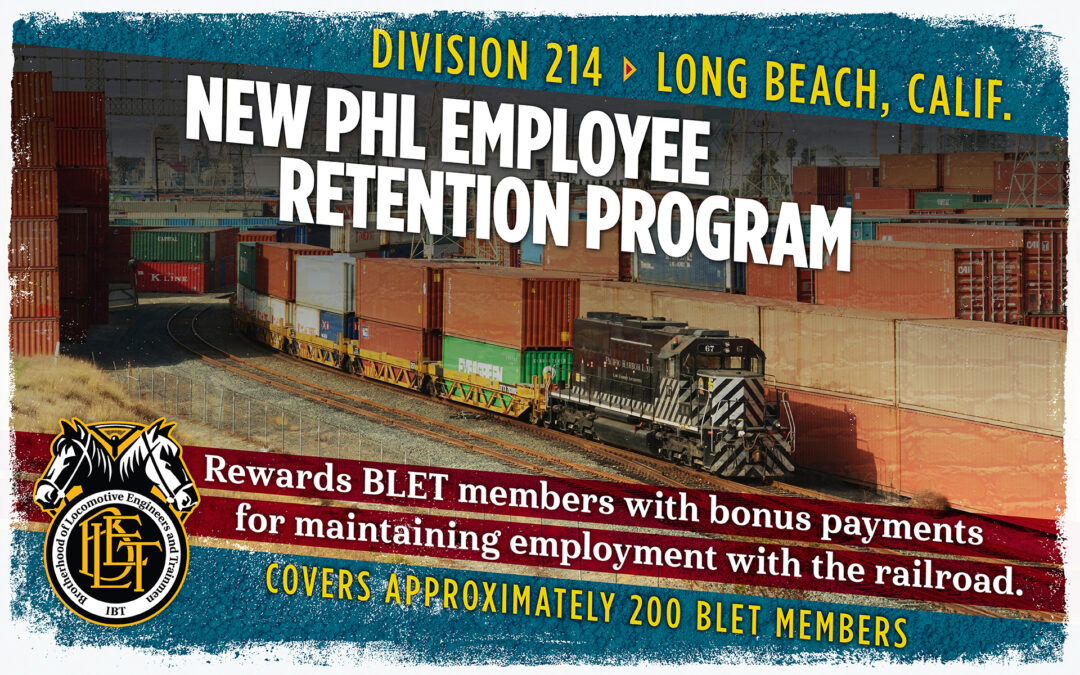A new agreement between the BLET and the Pacific Harbor Line (PHL) illustrates the importance of locomotive engineers to a railroad’s success.
The PHL Employee Retention Program, signed by BLET General Chairman Brian Carr on January 17, 2024, rewards BLET members with substantial bonus payments for maintaining employment with the railroad. Qualifying members can earn up to $18,000 in bonus payments if they meet program requirements over the next two years.
 The deal covers approximately 200 BLET members who belong to Division 214 in Long Beach, Calif. Along with General Chairman Carr, Division 214 Local Chairman Jose Covarrubias invested significant time and energy working with PHL management to negotiate the deal.
The deal covers approximately 200 BLET members who belong to Division 214 in Long Beach, Calif. Along with General Chairman Carr, Division 214 Local Chairman Jose Covarrubias invested significant time and energy working with PHL management to negotiate the deal.
It reads in part: “PHL and its employees represented by the BLET share a common interest in the retention of qualified locomotive engineers… to provide excellent customer service.”
Qualifying members will earn up to $8,000 in bonus payments between January 1, 2024, and December 31, 2025. They will earn an additional $10,000 bonus if the PHL is selected by the Port of Los Angeles and the Port of Long Beach as the switching company for the ports after January 1, 2026. These bonus payments are in addition to the negotiated rates of pay under the BLET’s collective bargaining agreement with PHL.
“This is a win for BLET members,” General Chairman Carr said. “Professional locomotive engineers play a major role in the success of any railroad, and this agreement recognizes the valuable contributions made by BLET members.”
Assigned National Vice President Garrison Best stated: “This agreement provides a foundation to retain and reward the workforce of PHL. The efforts of GC Carr and LC Covarrubias reinforce that the supply chain is directly impacted by BLET members. I am proud to have assisted in finalizing an agreement that recognizes that.”
PHL’s primary business is intermodal containerized traffic. It operates over 96 track miles and provides switching services at the Ports of Long Beach and Los Angeles, which together form the largest container port in the United States.

